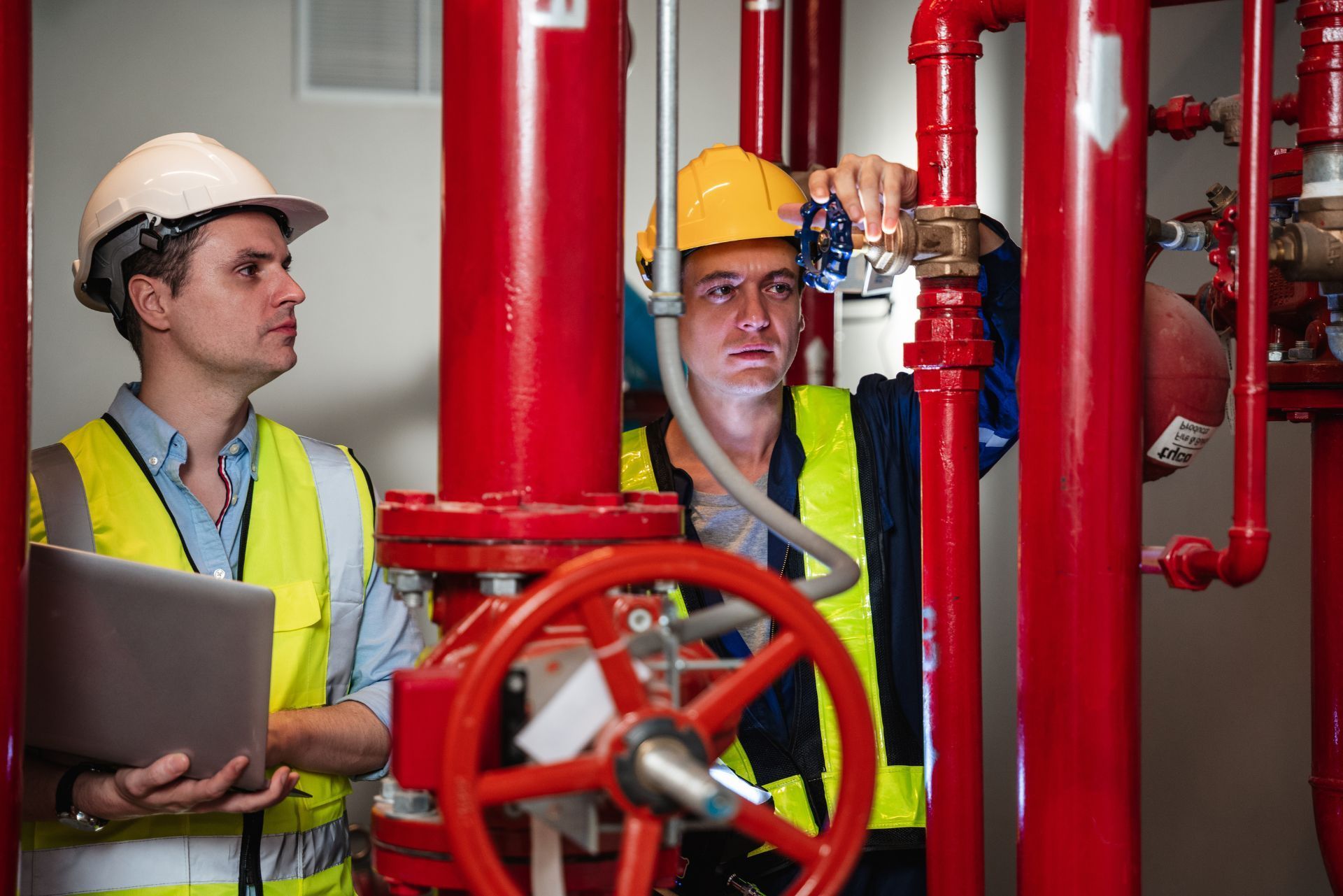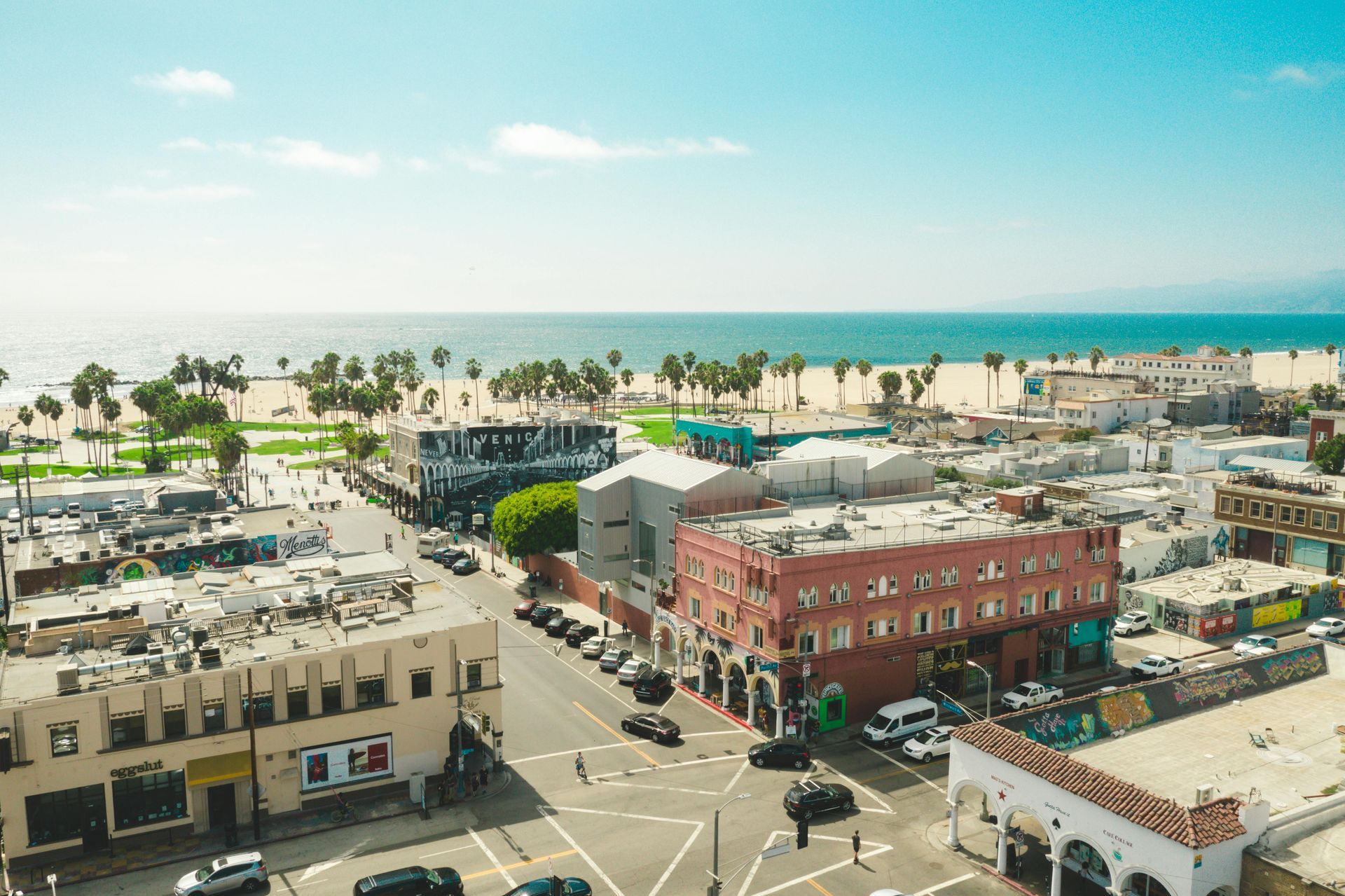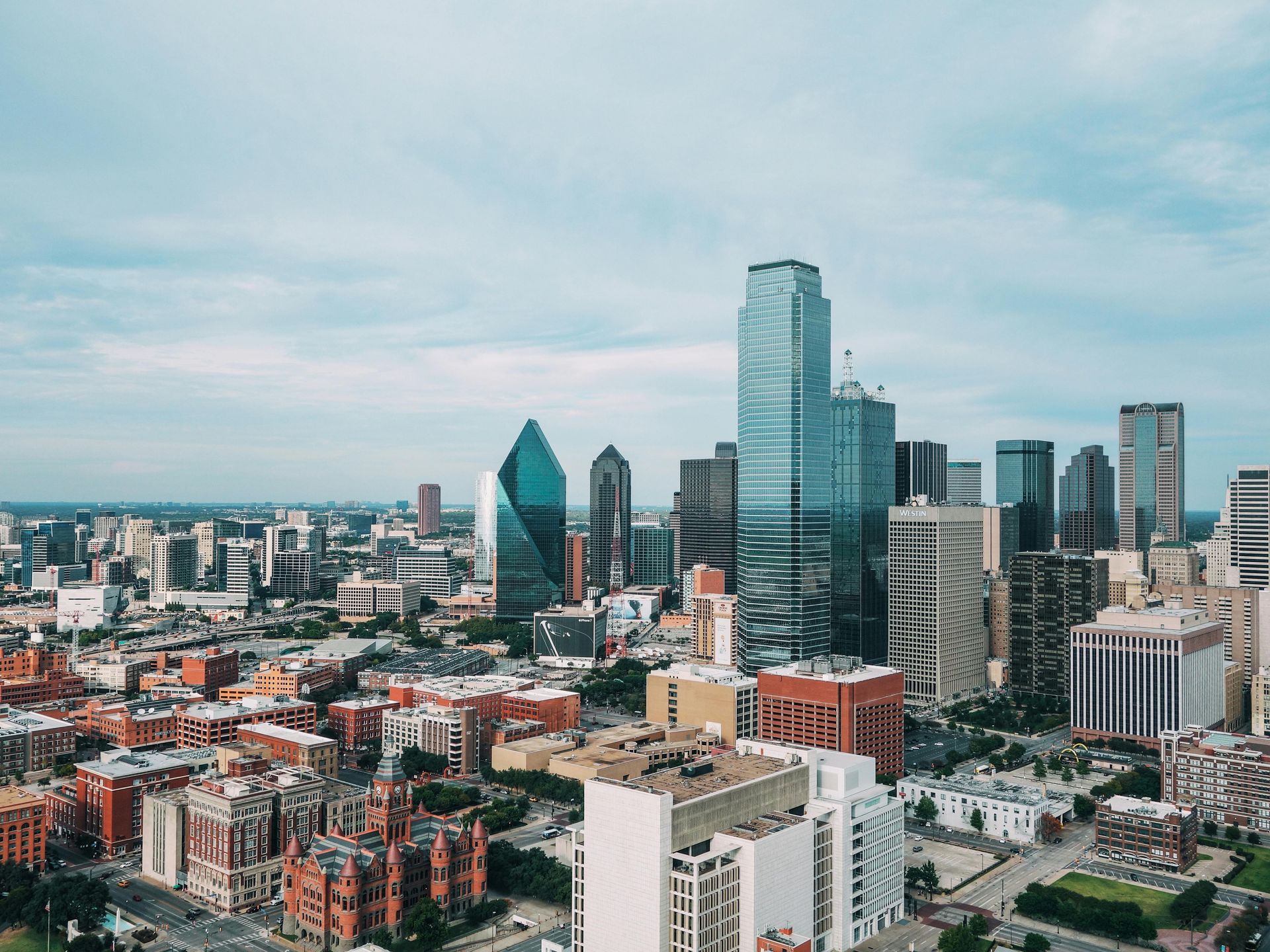Index
Contact Us
Phone
Location
Simi Valley, CA 93065
The Woodlands, TX 77382
Katy, TX 77494
Gas fitters play a critical role in ensuring the safe installation, maintenance, and repair of gas systems in residential, commercial, and industrial settings. Given the inherent risks associated with working with gas, having the right insurance coverage is essential for protecting both the business and its clients. This comprehensive guide explores everything gas fitters need to know about insurance—from the types of coverage available to the factors influencing insurance costs in today’s market.
With rising insurance premiums across many sectors, including home insurance, understanding the landscape is more important than ever. For example,
home insurance premiums recently rose by 9.3% on average, reflecting broader trends of increasing costs driven by climate change and regulatory challenges. These factors also influence the insurance market for tradespeople like gas fitters, making it vital to stay informed.
Why Gas Fitters Need Specialized Insurance
Gas fitting involves handling flammable and potentially hazardous materials, which increases the risk of accidents, property damage, and bodily injury. Without proper insurance, gas fitters expose themselves to significant financial liabilities that can threaten their business’s survival. The nature of gas fitting work means that even a minor oversight can lead to catastrophic results, making it essential for professionals in this field to be adequately protected.
Standard business insurance policies often do not cover the unique risks associated with gas fitting work. Specialized insurance products tailored for gas fitters provide protection against claims related to equipment failure, gas leaks, explosions, and other incidents that can arise on the job. These specialized policies not only cover legal fees and damages but also include provisions for loss of income during periods when a gas fitter may be unable to work due to an incident. This financial cushioning is crucial for maintaining operational stability and ensuring that the business can recover quickly from any setbacks.
Moreover, many clients and regulatory bodies require gas fitters to carry specific insurance coverage before work can commence. This ensures that all parties are protected in the event of unforeseen problems, reinforcing trust and professionalism in the industry. Clients are more likely to engage with gas fitters who can demonstrate their commitment to safety and compliance through appropriate insurance, which can be a significant competitive advantage in a crowded marketplace.
Additionally, the regulatory landscape surrounding gas fitting is continually evolving, with stricter safety standards and compliance requirements being implemented. Gas fitters must stay informed about these changes, as failing to comply can lead to severe penalties, including fines and the loss of licensure. Specialized insurance not only provides financial protection but also often includes access to resources that help gas fitters stay compliant with the latest regulations, such as training programs and safety audits. This proactive approach not only mitigates risks but also enhances the overall quality of service provided to clients.

Types of Insurance Coverage for Gas Fitters
Gas fitters should consider several key types of insurance to comprehensively protect their business:
1. General Liability Insurance
This coverage protects against third-party claims for bodily injury or property damage caused by the gas fitter’s operations. For example, if a gas leak during installation causes damage to a client’s property, general liability insurance can cover legal fees and settlements. Additionally, this insurance can also cover incidents that occur off-site, such as damage caused by a gas fitter while visiting a supplier or attending a trade show. This broad coverage ensures that gas fitters can operate with peace of mind, knowing they are protected against unforeseen accidents that could lead to significant financial loss.
2. Professional Liability Insurance
Also known as errors and omissions insurance, this protects against claims arising from mistakes or negligence in the professional services provided. If a gas fitter installs equipment incorrectly, leading to a hazardous situation, this policy can help cover the costs of legal defense and damages. Furthermore, professional liability insurance can also cover claims related to inadequate work or failure to deliver services as promised, which can be particularly important in maintaining a gas fitter's reputation and client trust in a competitive market.
3. Workers’ Compensation Insurance
Given the physical risks of gas fitting work, workers’ compensation insurance is crucial for covering medical expenses and lost wages if an employee is injured on the job. This coverage is often mandated by law depending on the jurisdiction. In addition to providing financial support for injured workers, this insurance can also help gas fitters avoid potential lawsuits from employees who may seek compensation for workplace injuries. By having this coverage in place, gas fitters not only comply with legal requirements but also foster a safer work environment, which can lead to improved employee morale and productivity.
4. Commercial Auto Insurance
If the gas fitter uses vehicles for transporting tools and equipment, commercial auto insurance protects against accidents involving company vehicles. This type of insurance is essential for gas fitters who rely on their vehicles for daily operations, ensuring that they are covered in case of collisions, theft, or vandalism. Moreover, commercial auto insurance can also provide coverage for liability claims arising from accidents involving company vehicles, thus safeguarding the business from potentially devastating financial repercussions.
5. Tools and Equipment Insurance
This coverage protects valuable tools and equipment from theft, loss, or damage, ensuring that work can continue without costly interruptions. Given the significant investment gas fitters make in their tools, this insurance is vital for maintaining operational efficiency. Additionally, tools and equipment insurance can also cover rental costs for replacement equipment while repairs are being made, allowing gas fitters to minimize downtime and keep projects on schedule, ultimately enhancing customer satisfaction.
6. Excess Liability Insurance
In some cases, standard liability limits may not be sufficient. Excess liability insurance provides additional coverage above the primary policy limits. It’s worth noting that
excess liability rates have increased substantially across contractor types, reflecting growing risks and claims costs in the construction and trades sectors. This type of insurance is particularly beneficial for gas fitters who handle larger projects or work with high-value clients, as it offers an extra layer of protection against catastrophic claims that could otherwise jeopardize their financial stability. By investing in excess liability insurance, gas fitters can ensure that they are adequately covered, no matter the scale of their operations.
Factors Influencing Gas Fitters Insurance Premiums
Insurance premiums for gas fitters are influenced by a variety of factors, many of which are shaped by broader market and environmental trends.
Climate Change and Risk Exposure
Climate-related disasters are on the rise, with a 32% increase in severe events in the United States between 2019 and 2022, leading to nearly a 300% surge in insured losses over the same period. This escalation in property risks has pushed insurance providers to adjust premiums accordingly. Gas fitters operating in regions prone to natural disasters may face higher insurance costs as insurers seek to mitigate their growing exposure. Additionally, the impact of climate change extends beyond immediate weather events; it also influences long-term trends such as rising sea levels and increased temperatures, which can affect infrastructure and service delivery. Gas fitters must stay informed about these environmental changes to better anticipate how they might affect their operations and insurance needs.
Regulatory and Market Challenges
The insurance industry is navigating complex regulatory environments and inflationary pressures. These factors contribute to rising insurance costs and more stringent underwriting standards. As noted by industry experts, the combination of climate change, regulatory challenges, and inflation has created a “perfect storm,” leaving many homeowners and businesses struggling to secure adequate coverage. Gas fitters are not immune to these market dynamics and should anticipate evolving insurance requirements and pricing. Moreover, regulatory changes can vary significantly by state or region, meaning that gas fitters must remain vigilant and adaptable to ensure compliance and maintain competitive pricing in their insurance policies.
Business Size and Scope
The size of the gas fitting business, number of employees, annual revenue, and the scope of services offered all impact insurance premiums. Larger operations with more employees or those offering specialized services may face higher premiums due to increased risk exposure. Conversely, smaller businesses might benefit from lower premiums, but they may also encounter limitations in coverage options. It’s crucial for gas fitters to evaluate their business model and consider how scaling operations, diversifying services, or even collaborating with other professionals in the industry can influence their insurance costs and overall risk profile.
Claims History and Experience
A clean claims history and extensive experience in the field can help reduce premiums. Insurers view businesses with frequent claims or limited experience as higher risk, resulting in higher costs or coverage limitations. This emphasizes the importance of maintaining high safety standards and effective risk management practices. Gas fitters should invest in training and development to enhance their skills and knowledge, which not only improves service quality but also demonstrates to insurers their commitment to minimizing risks. Additionally, adopting proactive measures such as regular equipment maintenance and safety audits can further bolster a company’s reputation and potentially lead to more favorable insurance terms.
Digital Communication and Customer Expectations
Interestingly, customer preferences are also influencing the insurance and service landscape. For instance,
78% of gas customers expect digital communication options, pushing companies to adopt more transparent and efficient communication strategies. Insurance providers are also adapting to these expectations by offering digital policy management and claims processing, which can improve service and potentially reduce administrative costs. Furthermore, the integration of technology in customer interactions allows gas fitters to enhance their service delivery, ensuring that clients receive timely updates and support. As the industry evolves, embracing digital tools not only meets customer demands but can also streamline operations, ultimately impacting the bottom line and insurance premiums positively.
How to Choose the Right Insurance Provider
Selecting the right insurance provider is crucial to ensure adequate coverage and competitive pricing. Gas fitters should consider several factors when evaluating insurance companies:
Industry Expertise
Choose insurers with experience in the trades and gas fitting sectors. Providers familiar with the unique risks and regulatory environment of gas fitting are better equipped to offer tailored policies and advice. This expertise can also translate into proactive risk management strategies, helping you mitigate potential hazards before they escalate into costly claims. Additionally, an insurer with a deep understanding of the industry may provide valuable insights and resources that can enhance your business operations and safety protocols.
Coverage Options and Flexibility
Look for insurers that offer comprehensive coverage packages with options to customize policies based on specific business needs. Flexibility in coverage limits and deductibles can help balance protection and cost. Furthermore, consider whether the insurer provides endorsements or additional coverage options that address specialized services or equipment unique to your operations. This adaptability ensures that as your business evolves, your insurance can evolve with it, providing peace of mind that you are adequately protected against emerging risks.
Financial Stability and Reputation
Work with insurers who have strong financial ratings and positive customer reviews. Reliable providers are more likely to handle claims efficiently and support policyholders during challenging times. Investigating an insurer's history of claims payment and customer satisfaction can reveal a lot about their reliability. Additionally, seeking feedback from peers in the gas fitting industry can provide firsthand insights into the insurer's performance and customer service, helping you make a more informed decision.
Claims Handling and Support
Prompt and fair claims processing is essential. Research how insurers manage claims and their responsiveness to policyholder inquiries. An effective claims process not only alleviates stress during difficult times but also reflects the insurer's commitment to their clients. Look for companies that offer 24/7 claims support or digital platforms for easy claims submission, as these features can significantly enhance your experience when you need to file a claim. Furthermore, understanding the claims process upfront can help you navigate it more effectively should the need arise.
Cost and Value
While cost is an important consideration, it should not be the sole factor. The goal is to find a provider offering the best value—adequate coverage, strong service, and reasonable premiums. It’s beneficial to obtain quotes from multiple insurers and compare not just the prices but also the coverage details. Sometimes, a slightly higher premium can mean significantly better coverage or services, such as risk management resources or additional support during claims. Additionally, inquire about discounts for bundling policies or for maintaining a good safety record, as these can further enhance the overall value of your insurance investment.

Emerging Trends Impacting Gas Fitters Insurance
The insurance market continues to evolve, influenced by technological advancements, environmental factors, and economic shifts. Gas fitters should stay informed about these trends to anticipate changes and adapt their insurance strategies accordingly.
Increased Oil and Gas Production Risks
Despite facing significant losses fueled by climate change, insurers continue to provide coverage for increased oil and gas production activities. This dynamic reflects the complex risk environment for energy-related trades and may affect insurance availability and pricing for gas fitters involved in such projects. Understanding these market nuances can help gas fitters better negotiate coverage terms and premiums.
Complexity in Insurance Contracts
Insurance contracts are becoming increasingly complex, with tighter margins and a stronger emphasis on demonstrating value for both payers and providers. This complexity means gas fitters must carefully review policy terms and work closely with brokers or legal advisors to ensure their coverage meets all operational needs without hidden gaps.
Affordability Challenges
The rising cost of insurance, driven by climate risks and inflation, is creating affordability challenges for many businesses. The widening gap between insurance costs and the coverage homeowners and contractors can rely on is a growing concern. Gas fitters should proactively manage risks, maintain strong safety records, and explore risk mitigation strategies to help control insurance expenses.
Tips for Managing Insurance Costs
While insurance is a necessary expense, gas fitters can take steps to manage and potentially reduce their premiums:
- Implement Robust Safety Protocols: Demonstrating a commitment to safety can reduce the likelihood of claims and improve insurer confidence.
- Bundle Policies: Combining multiple insurance policies with one provider may qualify for discounts.
- Maintain Accurate Records: Keeping detailed records of work, training, and claims history supports better underwriting.
- Review Coverage Annually: Regularly assess insurance needs and adjust coverage to avoid paying for unnecessary protection.
- Work with Experienced Brokers: Insurance brokers specializing in trades can help identify the best coverage options and negotiate favorable terms.
Conclusion
Gas fitters operate in a high-risk environment that demands specialized insurance coverage to protect their business, employees, and clients. Understanding the types of insurance available, the factors influencing premiums, and the evolving market trends is essential for making informed decisions.
With insurance premiums rising across industries due to climate change, regulatory pressures, and inflation—as evidenced by the recent 9.3% increase in home insurance premiums—gas fitters must be proactive in securing the right coverage. Partnering with knowledgeable insurers, maintaining strong safety practices, and staying informed about industry developments will help ensure long-term business resilience and success.
Types of Electrician Insurance We Provide
Areas we serve




